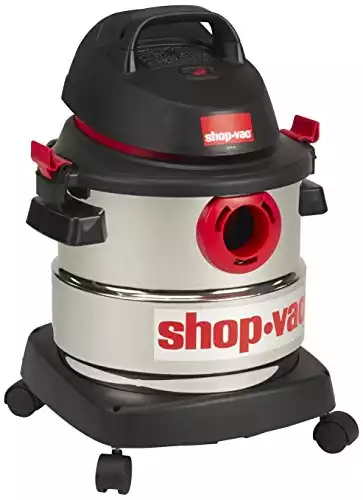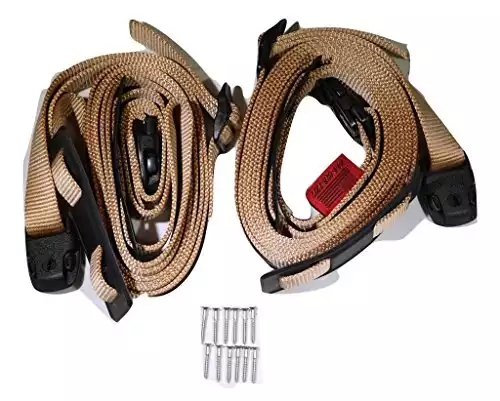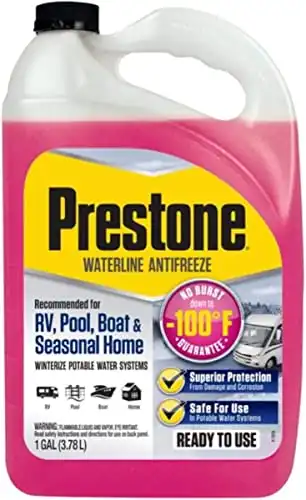How to Winterize a Hot Tub the Right Way
If you’re closing your hot tub for the winter, it’s not as simple as putting on the cover and walking away. Freezing temperatures and ice can ruin your spa. And even if you drain out the water sitting in the tub, any water inside your plumbing can crack your pipes and equipment.
That’s why properly winterizing your hot tub is critical to protect your spa from permanent damage. So here’s how to winterize your hot tub the right way, including how to remove all of the water inside your hot tub pipes properly. Watch the video below or keep reading for a complete tutorial.
If you keep your spa running all winter, you don’t need to winterize your hot tub. But that also means you’ll have to keep regularly testing the water, adding chemicals, cleaning it, and paying for the electricity to run it when you’re not using it.
So if you’re not planning to use your hot tub frequently, it’s time to winterize it. That means draining your hot tub, removing all of the water out of the plumbing and equipment, and cleaning the surfaces.
My fool-proof system for keeping any hot tub clean and clear at all times. Our course covers every type of hot tub, including portable spas, inflatable hot tubs, inground hot tubs, swim spas, and more. This is the LAST and ONLY hot tub guide you'll need.
How to Winterize Your Hot Tub
Winterizing your hot tub is similar to the process of draining and cleaning your hot tub, with the added step of removing every drop of water from your plumbing, equipment, blower, and jet fittings.
You’ll need the following supplies:
- Sump pump
- Garden hose
- Shop-Vac
- Filter cleaner
- Line flush cleaner
- Cover cleaner
- Non-abrasive sponge
- Soft cloths or towels
1. Allow Chemical Levels to Drop
Before you drain all the water from your hot tub, you need to allow the chemical levels to drop. Stop adding new chlorine or bromine to the water. Let it dissipate for a few days, then test your water. Once the chlorine (or other sanitizer) level has dropped to near zero, you can begin winterizing your hot tub.
2. Turn Off the Breaker
Make sure there is absolutely no power getting to your hot tub. Turn off the power at the breaker. You can also simply unplug your hot tub if it’s not hard-wired. Do not skip this step. Electricity and water do not mix, and failing to cut power to the hot tub will put you—and anyone who may be helping you—in danger during this process. Safety first, always.
3. Drain the Hot Tub
Remove the drain cap, and attach the garden hose to the drain spout. Make sure the other end of the hose is in an appropriate place to drain all the water. Remember, you’ll be releasing several hundreds of gallons of water. Then, allow the spa to drain.
A quicker way to drain your hot tub is to pump the water out with a sump pump. Keep an eye on the hot tub so the pump doesn’t run dry. An inch or two of water will remain at the bottom of the hot tub which will be removed later.
If you’ve never drained your hot tub or need help finding the drain spout, check out our guide on How to Drain a Hot Tub.
Note: Remove the drain cap and keep it off your hot tub for the winterization process. Keep the drain cap somewhere safe so you’ll be able to find it easily when you’re ready to refill your hot tub.
4. Drain the Blower
If your hot tub has an air blower, drain the water from it before continuing.
- Turn off the heater. Never run the heater when the hot tub is empty, so make sure the switch is in the off position.
- Cover the hot tub. Put the hardcover in place, just as you normally would.
- Turn the breaker on. Or plug the hot tub in, if you just unplugged it.
- Turn the hot tub on. This will run the blower. Let it run for about 30 seconds to remove any water from inside it.
- Turn the hot tub off.
- Turn the breaker off. Or unplug the hot tub.
- Remove the cover. Then get back to winterizing your hot tub.
5. Loosen the Unions on the Pumps and Heater
Open the access panel in the cabinet, and locate the pump(s) and heater. Loosen all PVC pipe unions to allow water to drain from the plumbing lines.
If the pump has a drain plug, remove that as well, and allow any water inside the pump to drain out.
Once the water has drained, retighten the unions, replace the plugs, and close the air-bleed valves. If there’s any residual water, you’ll blow out the lines in a later step with a shop-vac.
6. Remove and Clean the Filters
Don’t leave your filter cartridges in your hot tub over the winter. You also don’t want to store dirty filters. Remove your filter cartridges, and take this opportunity to clean them.
Using a filter cleaner, soak your filters in a bucket of water and filter solution for 24 hours, or at least overnight. If you need more help cleaning your filters, check out our guide on How to Clean a Hot Tub Filter.
Soak your hot tub filters in this deep-cleaning solution, rinse with water, and your filters will look brand new in 24 hours!
If the filters are beyond cleaning, dispose of them, and start with new filters when you open your hot tub next season.
Once you’ve removed the filter, remove any water left in the filter well. You can do this with the Shop-Vac, sponges, or towels.
7. Blow Out the Lines
Clearing out all of the water from the lines is the key. Leaving any water in the plumbing lines over the winter can cause the lines to crack or burst. You want your hot tub to be completely empty over the winter, and that means every part of it, not just the tub.
Turn the Shop-Vac’s setting to blow. Insert the hose into every drain, union, and jet, and the filter cavity. Blow into each spot for 10 to 15 seconds to force the water out of the lines and into the tub.
When you finish, repeat the process. Again, you don’t want any water in the lines. Make sure your jets are open during this process.
A shop-vac is essential for removing water from your hot tub or pool.
8. Remove Remaining Water
If there’s still a few inches of water left in the well of the hot tub, now’s the time to remove it.
Depending on how much water is now in the tub, you may want to use the sump pump again, and then use the Shop-Vac to pull out whatever the pump can’t get. If it’s just a little water, the Shop-Vac should be able to handle it all.
9. Clean the Shell
Use a non-abrasive sponge or soft cloth and a hot tub surface cleaner that doesn’t require rinsing to clean the shell. You can also use diluted white vinegar. Either way, make sure to get all the nooks and crannies.
If you find a ring of hot tub scum on the waterline, you may need to soak it a bit with the hot tub cleaner before scrubbing it away.
Don’t forget to remove the headrests and clean under them too. You may find a little water hiding under there.
303 Marine Multi-Surface Cleaner is perfect for cleaning hot tubs. It cleans and brightens water-safe surfaces, rinses residue-free. Spray, wipe/rinse, and repeat if necessary.
10. Clean the Cover
If you’re winterizing your hot tub and keeping it closed for a few months, your hot tub cover needs to be clean.
For outdoor hot tubs, use a good cover cleaner that’s also a protectant to shield the cover from the sun’s rays. Clean the underside, the top, and the sides, getting into the crevices created by seams.
Let it air dry, or wipe it dry with a towel. You don’t want to close up any moisture when you cover your hot tub. That’s an invitation to mold and mildew.
11. Secure the Cover
Once the cover’s dry, place it over your spa. If it locks, lock it to prevent anyone or anything from climbing into the hot tub during the winter. Even if your hot tub cover locks, it’s a good idea to further secure it with wind straps to ensure it stays put, even in the harshest winter weather. If water gets into your hot tub over the winter, it can freeze, expand, crack, and damage your tub.
Protect your hot tub cover over the winter by securing it with wind staps and locks.
Can You Put Antifreeze in a Hot Tub?
You should not need to use antifreeze if you properly drain your hot tub, blow out your lines, and remove any standing water from your equipment and tub. But if you do want to add extra insurance to protect from freezing temperatures, check your hot tub manufacturer’s warranty first (these can be voided if using antifreeze). And use pool- or spa-grade antifreeze only.
It is safe for use in all potable and seasonal water lines. It protects systems down to -100° F, extreme cold weather, with a No Burst Guarantee.
After draining the water, removing the filter, and blowing out the lines, add antifreeze to the filter canister until it runs out into the footwell of your hot tub. Then apply a small amount to each jet.
Keep in mind that you’ll need to flush out any trace of antifreeze from your hot tub before you can use it again. So plan extra time when you restart your hot tub to rinse, flush, and remove the antifreeze (here’s a quick guide on How to Start Your Hot Tub).
Frequently Asked Questions about Hot Tub Winterization
Need more help winterizing your hot tub? Here are some common questions and answers.
When Should I Winterize My Hot Tub?
If you plan to drain and close your hot tub for the winter, plan to winterize before temperatures stay at or below freezing. This will give you time to safely remove all of the water from the plumbing and equipment without the risk of anything freezing and damaging your hot tub.
Is it Okay to Leave My Hot Tub Empty in the Winter?
The best way to protect your hot tub from winter temperatures is to keep it full of water and running with the heat on. However, if you do want to drain your hot tub, you’ll need to properly winterize your spa by blowing out your lines with a shop vac, draining the blower, loosening the unions on the pump and heater, and removing any standing water.
3 More Ways We Can Help With Your Hot Tub
- Hot Tub Cheat Sheets (Free): Easy-to-use guides to help you keep your hot tub water balanced and sanitized.
- The Hot Tub Handbook: An illustrated guide to DIY hot tub care, including water chemistry, maintenance, troubleshooting, and more.
- The Hot Tub Care Course. You’ll get step-by-step videos and a step-by-step downloadable guide with everything you need to know about hot tub maintenance.











